The Cleveland, Southwestern, and Columbus experienced a drawn-out death, its decline beginning in 1917 before final closure in 1931. The killer, as with most rail service in the United States, was the automobile, bus, and truck. The Great Depression would slightly speed up the closure of the line, but overall was not nearly as significant as motor vehicles were.
On the Tracks to Financial Ruin
The year 1919 marks the end of the railway’s eleven year golden age, from 1906 to 1919. 1917 marks the first year that the railway lost money, while experiencing 6.9 million passengers. It would only profit again in 1919, 1920, and 1923.1
Auto Mayhem Destroys the Green Line
The early years of the automobile were dangerous and chaotic. Driver’s licenses were not even a concept, much less a lawful requirement in most states until the late 1930s. In Ohio’s case, they would not appear until 1936, five years after the interurban had been shut down. Automobiles, Buses, and Trucks would destroy the Green Line, both through unregulated business and through making the roads that the interurban had paved themselves unbelievably dangerous.2
As the automobile became more popular “Jitney” vehicles became a common sight on the road. Jitney vehicles were makeshift buses and trucks, that, with their somewhat better door-to-door nature could entirely out-compete both the freight and passenger service of the Southwestern System. On top of that, the complete lack of regulation on automobile=based businesses, meant that anyone who could afford a vehicle and gas could start up Jitney truck and bus businesses. These would come into prominence in the very late 1910s with their prominence truly surging in 1920 onward. The Jitney would not last long though. By 1923, the makeshift Jitney was being replaced rapidly by purpose built buses and trucks, in organized companies, which would put heavier, more organized pressure on the interurban.3
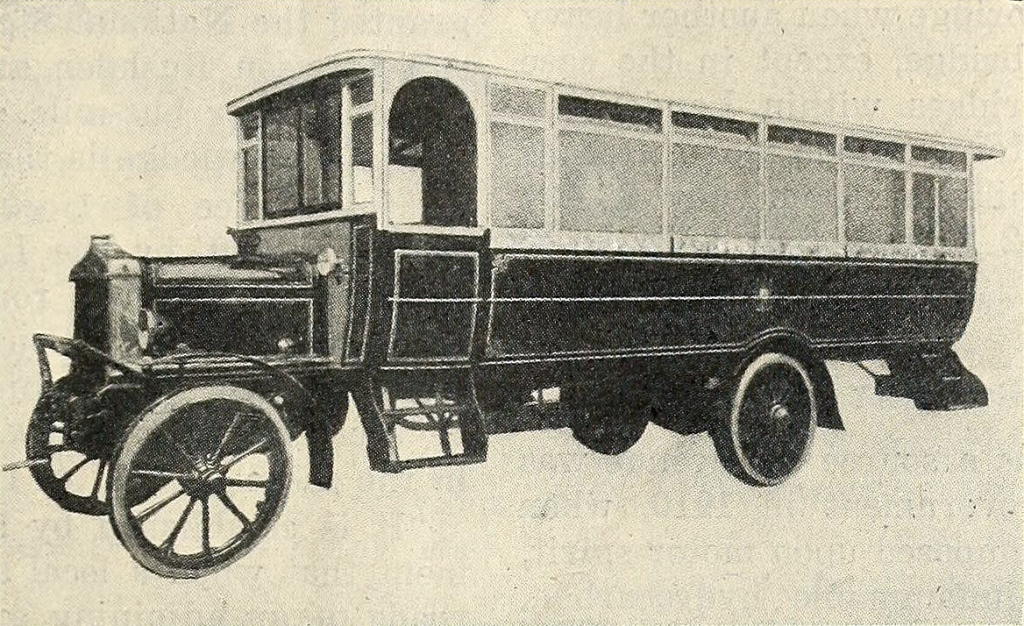
As mentioned earlier in this section, Ohio did not introduce drivers licenses until 1936.4 While Ohio did require licensing the vehicles, including with a plate, as early as 1908, any actual regulation to make sure drivers were actually competent did not exist until the interurban had died.5 Cars, trucks, and buses were incredibly dangerous, driven by people with absolutely no training. It became a common occurrence for automobiles to crash into the streetcars, which was often fatal to both sides of the crash. This problem became so frequent that it would kill the brand identity of the Green Line entirely. The somewhat low visibility of the dark green and gold streetcars would be subject to blame, likely thanks to automobile lobbyists, even if this may have not really been the case. Throughout the mid-1920s the entire rolling stock of the line would be painted in high visibility oranges, blues, and whites to increase visibility.6 While this did succeed, it also harmed brand identity in a way that the Cleveland, Southwestern, and Columbus Railway could not rebut.
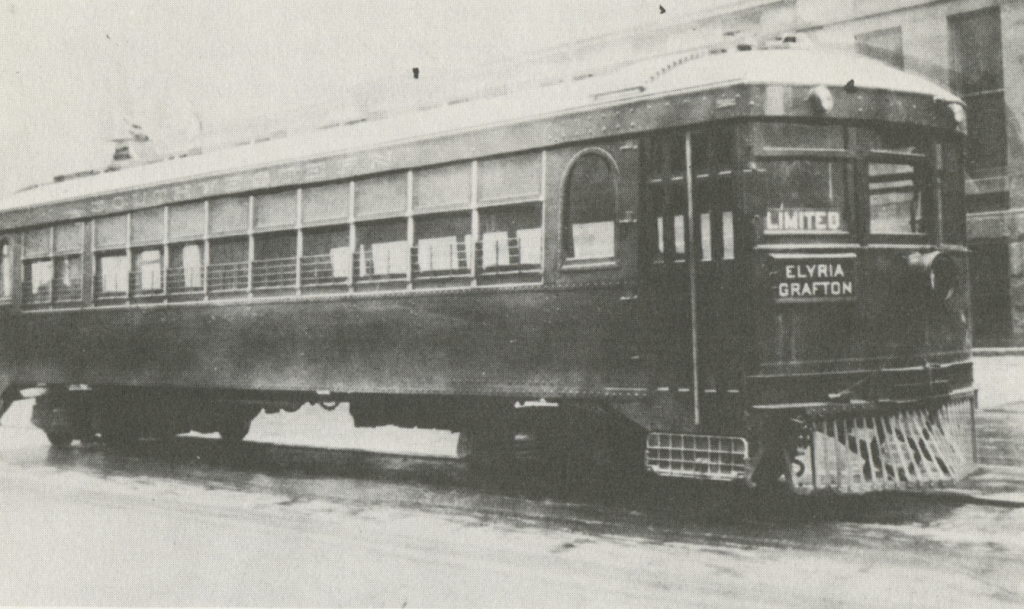
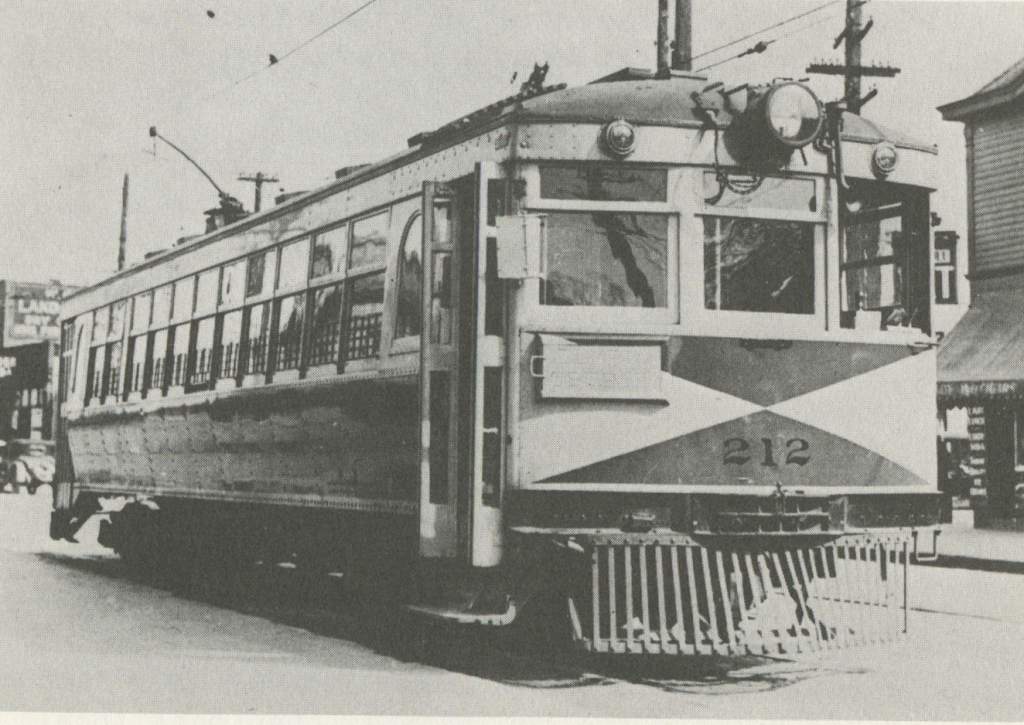
Car #212 at Kamm’s Corners in 1928, post-repaint. Visibility may have increased but brand integrity was severely damaged.
Going Down Fighting
The Southwestern System did not go down without a fight. In later years, advertisement can be found throughout local newspapers attacking the existence of the automobile and bus and arguing tooth and nail for the continued existence of the system. These advertisements, which are sourced from the Oberlin Review, are illustrated below.
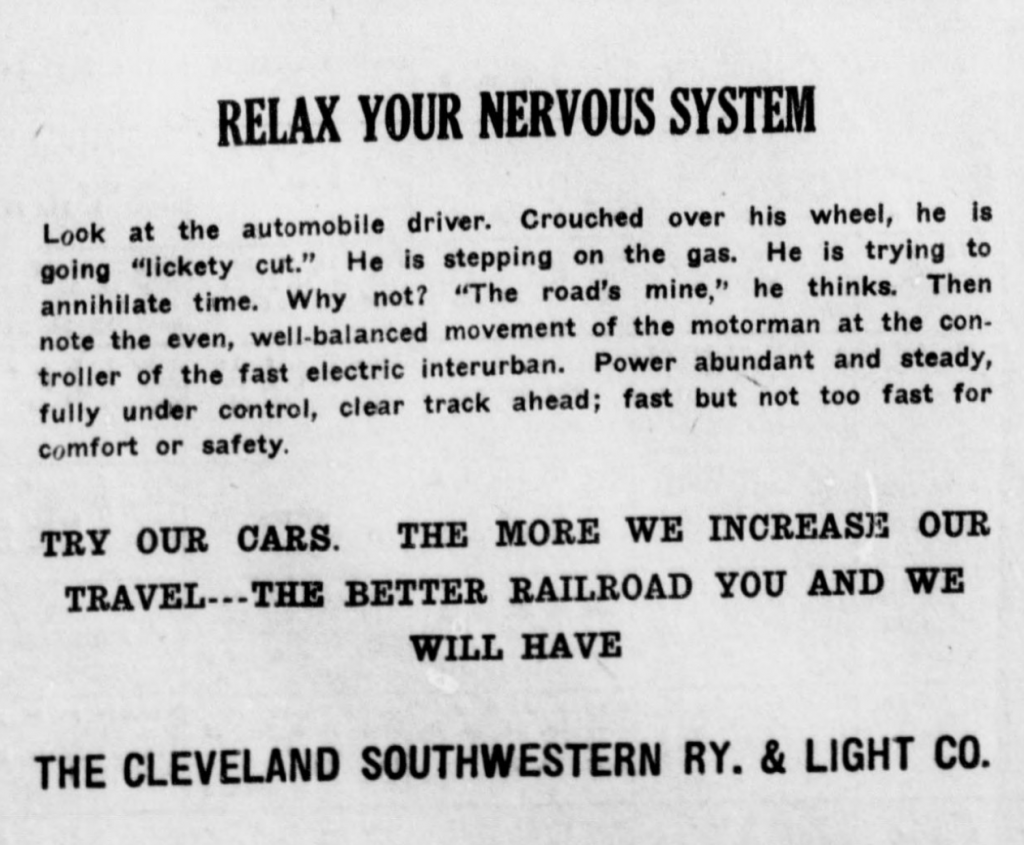

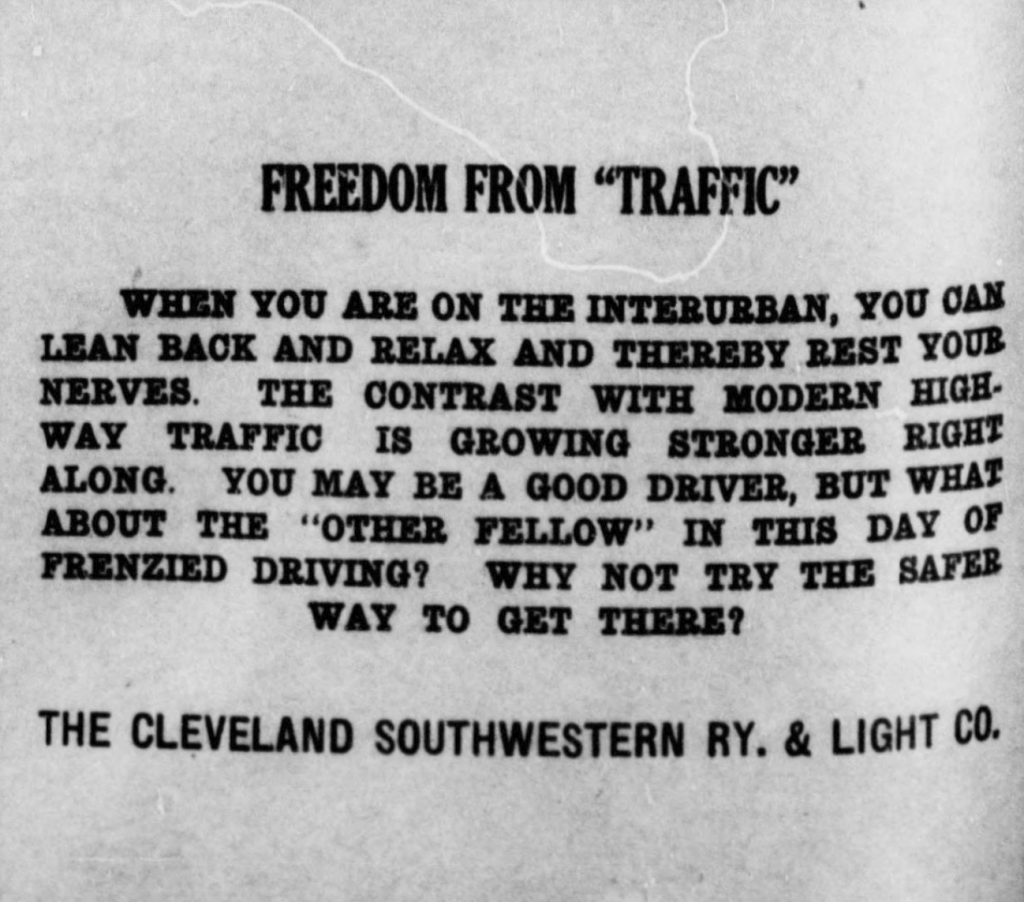
Conclusion
Citations
- Wilcox, Max E. The Cleveland, Southwestern, & Columbus Railway Story. Vol. 1. 1 vols. Max E. Wilcox, Northern Ohio Railway Museum, 1951 ↩︎
- Ibid. ↩︎
- Ibid. ↩︎
- No Author. “YEAR OF FIRST STATE DRIVER LICENSE LAW AND FIRST DRIVER EXAMINATION.” Federal Highway Administration, April 1997. https://www.fhwa.dot.gov/ohim/summary95/dl230.pdf.
↩︎ - “ARCHIVE: Ohio Porcelain License Plates.” Accessed May 12, 2025. https://porcelainplates.net/ohio_archive.html.
↩︎ - Wilcox, Max E. The Cleveland, Southwestern, & Columbus Railway Story. Vol. 1. 1 vols. Max E. Wilcox, Northern Ohio Railway Museum, 1951 ↩︎